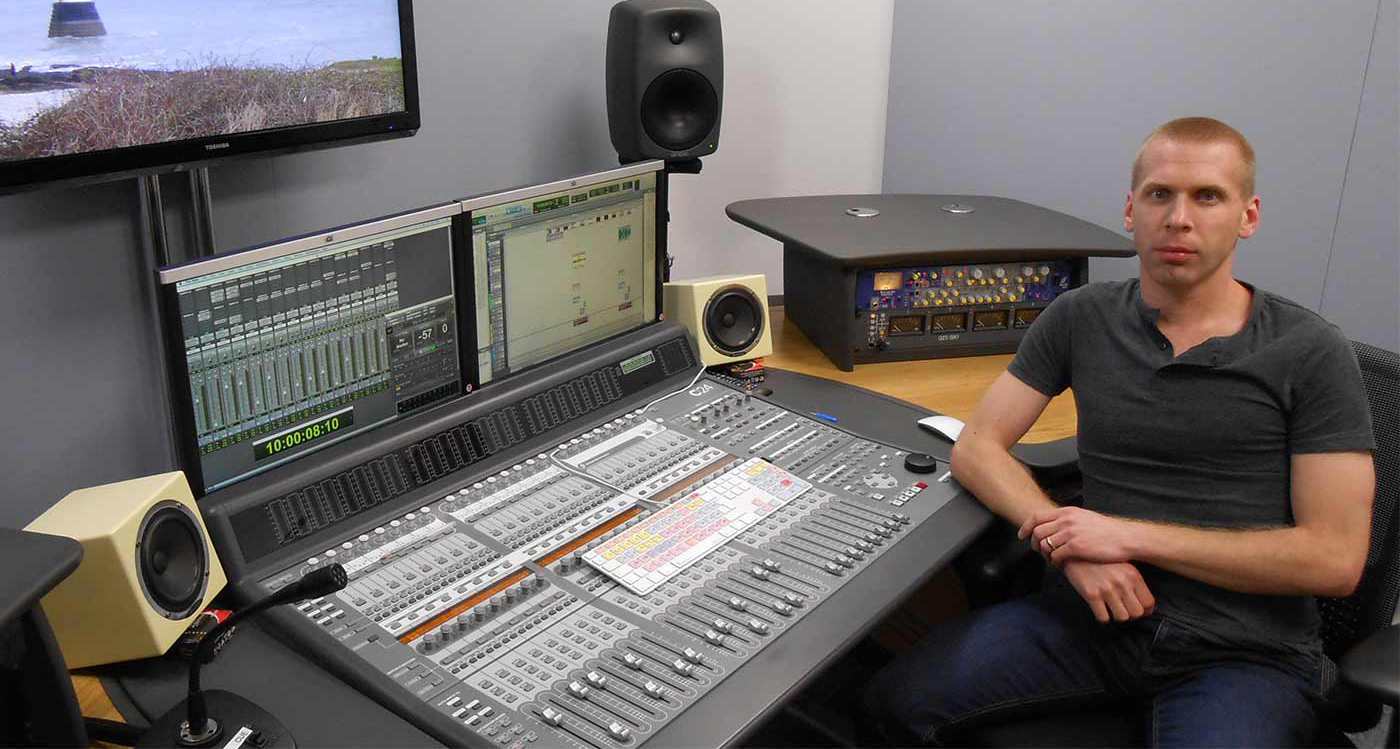Matt Creed: Elevating TV Mixes with Sonnox Plug-ins
With over 20 years of experience as an engineer and mixer, Matt Creed has become a trusted name in the UK post-production landscape, working on a diverse range of content from promos and documentaries to current affairs and news.
Juggling roles at ITV Wales, ITV London, MCR Post, and various independent post-production facilities, Creed faces the daily challenge of meeting tight TV deadlines while maintaining high-quality audio standards. We caught up with him to learn how Sonnox plug-ins have become essential tools in his workflow, enhancing his mixes and making his processes more efficient.

Balancing Multiple Projects with a Dependable Mix Setup
As a freelance re-recording mixer for ITV Wales, Creed handles a significant portion of their regional programming and also works on ITV London’s daytime promos. His typical mix setup includes about eight tracks of dialogue, eight tracks of mono effects, and four to eight stereo background tracks of music. “I break it down into groups—dialogue, mono effects, stereo effects, reverbs, delays, and music—plus a couple of commentary tracks,” Creed explains. This structured approach allows him to manage complex projects while maintaining clarity and organization in his mixes.
Discovering Sonnox Plug-ins: A Game-Changer for Quality and Efficiency
Creed was introduced to Sonnox plug-ins by a friend who works as a live monitor engineer. After a demo on an Avid S3L console, Creed decided to test them out in his own workflow. “I needed to see if they would speed up the process and fit into my workflow better than what I was currently using,” he says. The results exceeded his expectations. “Sonnox software is both HDX and Native based, which made a huge difference in the way I work. The sonic quality is superior to anything I had previously, and because it's HDX based, it utilizes the power of that format without taxing my Mac.”
SuprEsser DS: Tackling TV-Specific Challenges
One of Creed’s go-to tools is the SuprEsser DS, which excels at handling the problematic frequencies often encountered in TV audio. “It’s great on voices and helps me conform to TV loudness standards,” he says. “SuprEsser DS improves those sibilant frequencies that give the appearance of being too loud, leveling them down without any audible artifacts.” In a world where loudness is a daily consideration, SuprEsser DS ensures Creed’s mixes maintain high quality while meeting industry standards, especially for short-form content like 20-second promos.
Oxford Dynamics: A Versatile Workhorse
Creed frequently turns to the Oxford Dynamics plug-in, making full use of its Compressor, Limiter, Expander, and Warmth features. “The Expander is a great tool for voiceovers, eliminating breath inhales and other unwanted noise. It’s basically a set-and-forget tool—I can just leave it there and it does what it needs to do,” he says. Creed appreciates the ability to drive the compressor and limiter hard without coloring the sound, allowing him to set up a template that consistently delivers results. “The Warmth feature is particularly effective on music, enhancing the lower mids and achieving results that would previously require multiple plug-ins.”
Enhancing Sound Definition with the Inflator
Another staple in Creed’s plug-in arsenal is the Inflator, which helps expand the definition in the overall sound. “I tend to use it across groups, like stereo backgrounds and music,” he explains. “It quickly gets the audio elements to sit exactly where I need them sonically. It’s warm, and it just works.”
Precision EQ and Natural Reverb with Sonnox
For Creed, the Oxford EQ’s variety of curves has been invaluable, especially when dealing with problematic frequencies. “Rather than just using it as a corrective tool, I can also use it creatively,” he notes. “I use it across dialogue tracks and other elements, and having four different types of EQ in one plug-in means I don’t need to turn to anything else.”
The Oxford Reverb also plays a key role in Creed’s workflow. “It sounds so natural, and when I need a quick fix, the presets are a huge time saver,” he says. To finalize his mixes, Creed runs everything through the Oxford Limiter, which helps control peaks that may have slipped through during the pre-mix stage. “It’s perfect for bringing peaks back under control, and it just sits invisibly in the background.”
Improving Workflow Efficiency with Sonnox Plug-ins
Using Sonnox plug-ins has significantly streamlined Creed’s workflow. “They’ve made a major difference. I’ve created ‘go-to’ templates for all the plug-ins I use daily, and they’re my starting point,” he says. “Often, I can just set them and forget them, which is incredibly efficient. Plus, because they’re AAX DSP, they don’t pull resources from my Mac, allowing me to run everything else I need without any strain on my system.”
Creed’s reliance on Sonnox plug-ins highlights their importance in delivering high-quality audio for broadcast under tight deadlines. By integrating these tools into his workflow, he’s able to maintain the standard of excellence required in TV production while managing a busy schedule of projects across multiple platforms.
